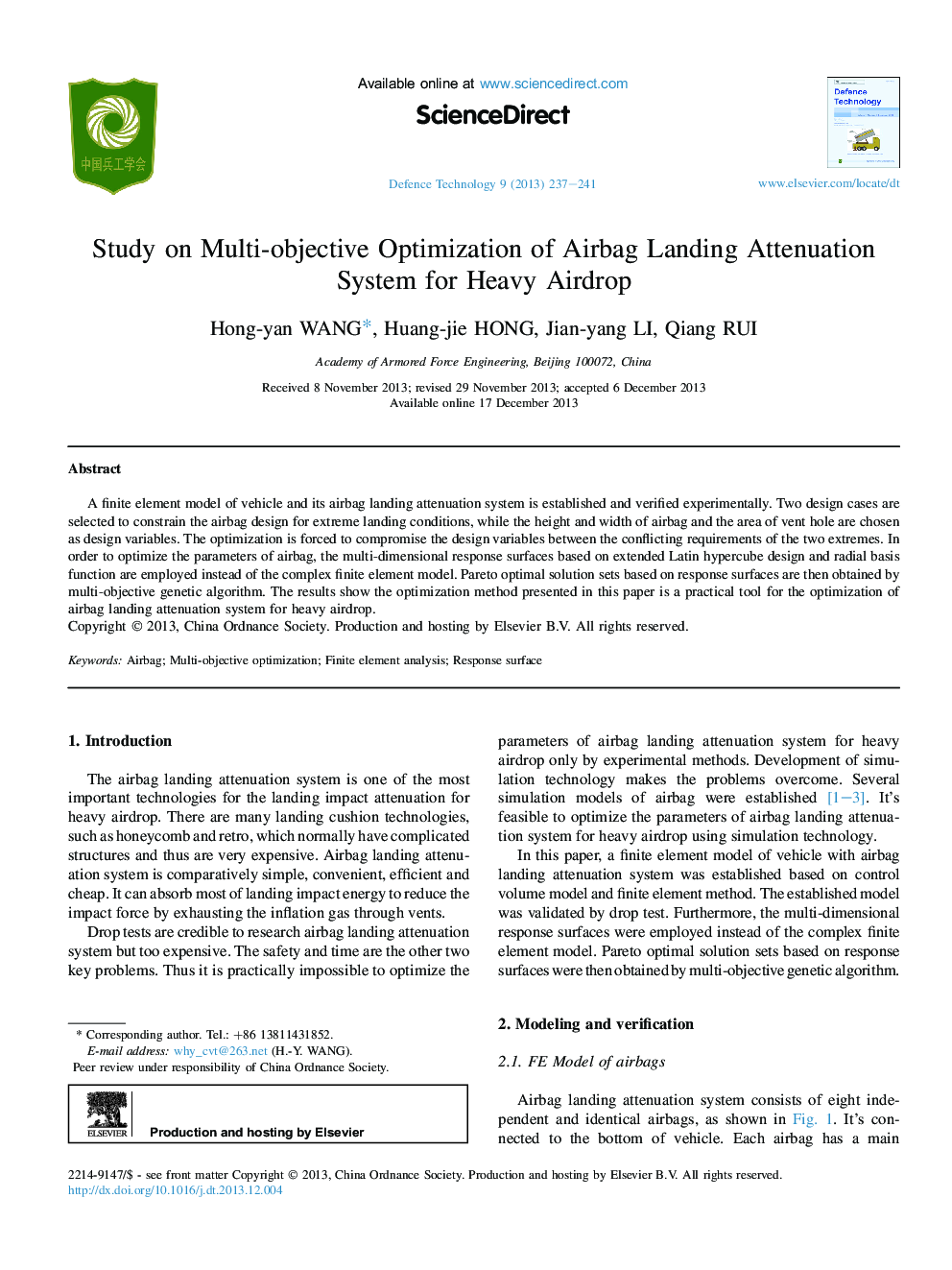| Article ID | Journal | Published Year | Pages | File Type |
|---|---|---|---|---|
| 764769 | Defence Technology | 2013 | 5 Pages |
A finite element model of vehicle and its airbag landing attenuation system is established and verified experimentally. Two design cases are selected to constrain the airbag design for extreme landing conditions, while the height and width of airbag and the area of vent hole are chosen as design variables. The optimization is forced to compromise the design variables between the conflicting requirements of the two extremes. In order to optimize the parameters of airbag, the multi-dimensional response surfaces based on extended Latin hypercube design and radial basis function are employed instead of the complex finite element model. Pareto optimal solution sets based on response surfaces are then obtained by multi-objective genetic algorithm. The results show the optimization method presented in this paper is a practical tool for the optimization of airbag landing attenuation system for heavy airdrop.
